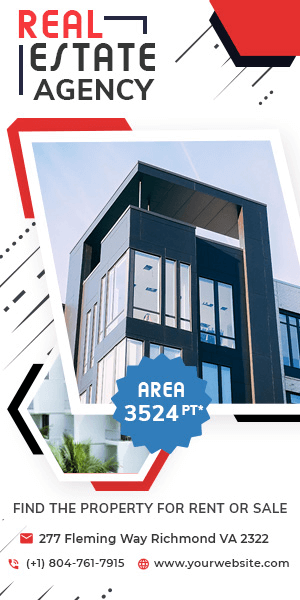If you’re planning to build a school, costs can vary significantly based on where you’re building, the materials you choose, and the complexity of the design. A small rural school might cost a few million, while a large, custom-designed high school or college building could top $100 million. It ultimately comes down to factors such as square footage, features, and whether you’re using prefabricated parts or hiring a full construction crew. In this guide, we’ll walk you through average cost to build a school, what factors impact cost, and examples of real school builds in the U.S. and Canada, so you can get a clear idea of what your project might look like.
Quick look
- In the U.S., average costs range from $230 to $240 per square foot, while in Canada, costs can reach CAD $439 per square foot, with total project budgets ranging from $5 million to $100 million or more.
- Larger buildings, custom features, premium materials, and complex site prep can significantly increase overall construction costs.
- Energy-efficient systems, smart classroom tech, and sustainable building practices increase upfront investment but lower long-term operating expenses.
- From modular builds, such as Innovation Academy’s $5 million addition, to North Toronto Collegiate’s $ 80 million+ high-end rebuild, actual school projects demonstrate how scope and location impact cost.
Average cost to build a school
Building a school in the U.S. costs between $230 and $240 per square foot on average. A national breakdown shows that the costs are approximately $239 for elementary schools, $230 for junior high schools, and $233 for high schools, with vocational schools at around $221 per square foot.
In some cases, costs can be significantly higher, especially for luxury or environmentally friendly school buildings. For example, one report estimates that private schools can cost anywhere from $295 to $756 per square foot, depending on location and materials.
Moving north to Canada, Ontario’s Financial Accountability Office reports that the average replacement cost of school buildings is roughly CAD $439 per square foot as of 2024.
When thinking about total project costs:
- A small rural elementary school in the U.S. may cost between $5 million and $15 million, depending on its size and finishes.
- A large urban high school or university building can cost between $50 million and $100 million or more.
These numbers match real school projects. For instance, Quw’utsun Secondary School, located in British Columbia, was completed in 2025 and cost approximately CAD $86.7 million.
Estimated cost of building a school: Small, mid-sized, large comparison
| School Type | U.S. Cost Range | Canada Cost Range |
| Small (rural, basic) | $5 M – $15 M | CAD $6.5 M – $20 M |
| Mid-size (K–8) | $20 M – $50 M | CAD $25 M – $65 M |
| Large (urban high school/college) | $60 M – $100 M+ | CAD $75 M – $130 M+ |
Key factors affecting the cost to build a school
Building a school is about creating an environment that fosters learning and enrichment. Many details can affect the final cost, either increasing or decreasing it. From the size of the school to its location, here are the main factors that affect the total price.

Photo courtesy of
Size – Bigger builds mean higher cost
The more space a school needs, the more expensive it becomes. Even an extra 10,000 square feet can add millions to your total. Bigger schools require:
- More classrooms and specialized spaces like science labs and libraries
- Larger gyms, cafeterias, and administrative offices
- More materials, more labor, and more complex systems like HVAC, electrical, plumbing, and fire suppression
Materials – Budget vs premium options
The type of materials used during construction plays a big role in both the initial cost and how much upkeep the building might need over time. Choosing cheaper options can help lower your budget upfront, but it may result in more repairs down the road. Below are a few materials commonly used in school construction, along with their pros and cons.
Concrete block construction
- Pros: Very strong, long-lasting, and low maintenance
- Cons: More expensive to build with, heavier material
Steel frame with panel systems
- Pros: Quick to put up, good for larger structures, flexible design
- Cons: Can cost more to insulate, not always as energy-efficient
Modular or prefabricated structures
- Pros: Cheaper and faster to build, good for temporary or small schools
- Cons: Limited design options, may not meet all permanent school codes
Complexity – Simple vs custom design
Extras add value and learning space, but they also increase design time, planning needs, and cost. A basic one-story school with standard classrooms and hallways will cost less than a custom-designed facility. Some schools include:
- LEED-certified designs for energy efficiency
- Science wings, media labs, or performance auditoriums
- Commercial kitchens, daycare wings, or athletic training centers
Labor – DIY vs contractor pricing
Most school projects need licensed professionals like architects, engineers, electricians, and plumbers. These workers come with experience and safety certifications, but also add to the budget.
DIY building is not a realistic option unless you’re planning a very small or temporary school made with prefab units. Even then, you may still need licensed crews for electrical and plumbing work.
Location – Regional differences
Where you build can have a big effect on cost.
- Urban areas: Costs are often higher because land, permits, and labor are more expensive in these areas. Construction timelines may also be longer due to congestion or zoning restrictions.
- Rural areas: Building in a rural location might save money, but it can be more challenging to find skilled labor or suppliers nearby.
- U.S. vs Canada: Building a school in Canada often costs about 10 to 25 percent more than in the U.S. due to differences in material costs, labor rates, and stricter energy codes.
Permits – Local building code costs
Building codes can slow down construction and increase costs, especially in older neighborhoods or densely populated urban areas. That’s why it’s important to check the local requirements before getting started. Rules can vary a lot depending on the city, province, or state, and they often cover things like:
- Zoning laws
- Environmental impact
- Accessibility standards (like ramps or elevators)
- Fire safety and occupancy limits
Sustainability and energy efficiency upgrades
Green features can raise upfront costs but often reduce long-term operating expenses. Many new schools aim for LEED certification, net-zero energy use, or improved air quality systems. While these features can add 2 to 10% to the construction budget, they could also qualify for government grants and save money over time. These upgrades can include:
- Solar panels and battery storage
- Geothermal heating and cooling
- Triple-glazed windows
- High-efficiency lighting and HVAC
Technology infrastructure
Schools need more than just chalkboards and books. Future-proofing with proper tech infrastructure often incurs higher upfront costs, but it reduces the need for disruptive retrofits later.:
- Smart boards and digital whiteboards
- Built-in classroom AV systems
- High-speed fiber optic internet
- Security cameras and keyless entry systems
Site preparation and land development
Before building begins, the land may need to be cleared, leveled, or improved. A site with major prep needs can add hundreds of thousands, or even millions, to the final budget. Costs here can vary a lot depending on:
- Soil quality and drainage
- Access to water, sewage, and electricity
- Environmental mitigation (e.g., protected wetlands)
Furniture, fixtures, and equipment (FF&E)
A brand-new building still needs to be fully equipped before it can open. This includes everything from desks and chairs to science lab stations and cafeteria appliances. It’s often budgeted separately from core construction but can account for 10 to 20% of total costs.
Basic vs. high-end school examples
Some schools are simple and built quickly with fewer features, while others are designed with advanced technology, eco-friendly systems, and specialized learning spaces. Here are two real-life examples that illustrate the significant variation in the cost to build a school.
Basic school example: Innovation Academy Charter School (Tyngsboro, MA)

Photo courtesy of https://galeassociates.com/
The Innovation Academy Charter School in Tyngsboro, Massachusetts, addressed classroom overcrowding by adding a 17,500-square-foot permanent modular classroom building constructed from prefabricated units.
Details:
- The modules were fully built off-site in a controlled plant and then delivered to the prepared foundation on campus.
- The expansion includes fourteen individual sections housing classrooms, a teacher’s lounge, vestibules, restrooms, and a central corridor.
- Big windows bring in ample natural light, while a rooftop HVAC system provides efficient climate control.
- This approach enables the school to expand quickly and affordably compared to traditional construction methods.
High-end school example: North Toronto Collegiate Institute

Photo courtesy of https://www.stouffvilleglass.com/
North Toronto Collegiate Institute is a public high school rebuilt with modern architecture and top-notch facilities in downtown Toronto. Completed in partnership with Tridel Group, the build cost over $80 million CAD.
Details:
- Custom-designed building with advanced architecture
- Science labs, music rooms, and a 600-seat auditorium
- Full athletic center, including two gyms and a rooftop field
- Energy-efficient lighting and climate systems
- Built as part of a larger mixed-use development to maximize land value
Things to consider for pricing variations
Even with average numbers in mind, school construction costs can change a lot depending on where and how you’re building. Here are some important things to keep in mind when planning your budget:
- Local construction costs can vary: Building in one state or province may cost more than another, depending on land value, contractor rates, and material availability.
- Labor shortages or surpluses matter: In some areas, it’s hard to find skilled tradespeople, which can raise prices and slow the build. In other places, having more available labor might reduce costs.
- Local vs imported materials: Using local materials can help lower transportation costs and support sustainability goals. But in some cases, imported materials may be needed and could increase the price.
- Use a school cost calculator: Tools like RSMeans or local school board resources can give you a more accurate estimate based on your region and project type. Talking to a local commercial builder is also a smart move.
- Don’t forget the extras: Desks, smart boards, security systems, and Wi-Fi networks all add up. These items aren’t always included in the central construction budget, so be sure to factor them in.
- Think beyond the build: Schools need long-term maintenance, energy, and staffing. A cheaper upfront cost might lead to higher operating expenses later on.
Planning a new build or expanding an educational facility? Don’t miss our gear reviews and project spotlights to help guide your construction planning:
- Top trade schools or construction
- The 10 best construction management schools in North America
- The ecology school where sustainable design meets education
Subscribe to our newsletter for more tips, tools, and updates from the jobsite.



